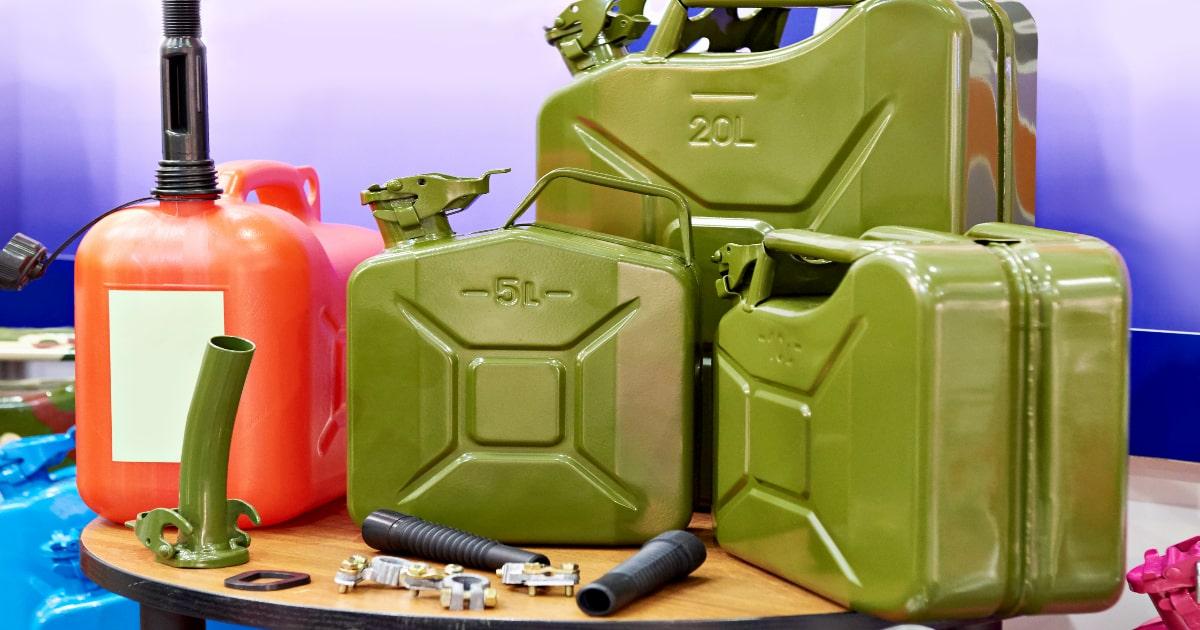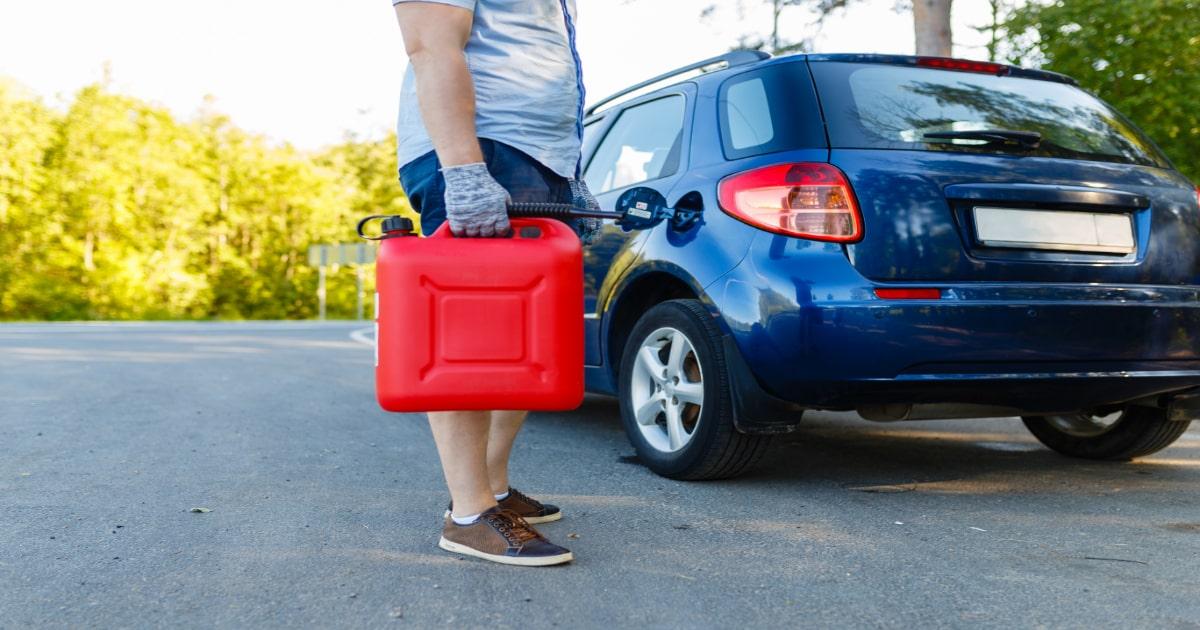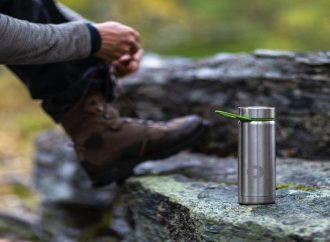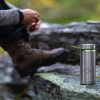If you find yourself running out of fuel quickly either on the way to your bug out location or simply just trying to get out of populated areas, and you have forgotten to take care of this element in your preps by storing fuel, then you will have to know how to siphon fuel from
If you find yourself running out of fuel quickly either on the way to your bug out location or simply just trying to get out of populated areas, and you have forgotten to take care of this element in your preps by storing fuel, then you will have to know how to siphon fuel from a car or van so you can use it yourself.
It is possible to physically empty a car’s gasoline tank purely by sucking action and gravity through a plastic tube. Clearly, we are talking about this as a desperate tactic to get your hands on some petrol or diesel from your automobile or someone else’s in times of emergency.
It would help if you considered a few things while siphoning petrol or diesel from a car as a prepper. First, be aware when dealing with highly flammable and dangerous chemicals
Obviously don’t be smoking when you’re doing this and don’t swallow any of the fuel. If some goes in your mouth just spit it out and keep spitting, then rinse your mouth out multiple times but don’t swallow.
In the UK, many accidents have occurred because of these silly mistakes even in these good times, and it’s likely if you’re siphoning fuel to survive a financial collapse that A&E isn’t going to be operating as usual.
Let’s take a look at exactly how to siphon fuel from a car or other vehicle for your survival needs.
What You Will Need To Siphon Fuel

As a prepper, the first thing to consider is the equipment you will need either in your home, in your car or in your dedicated vehicle bug out bag.
You will need a plastic tube with a one inch or smaller minimum hose diameter. If you don’t have a manual siphon specially bought fortimes like these, look for anything long enough to reach into the car’s petrol tank. It is best to use transparent material to see if you are genuinely transferring gasoline as you go, but anything like a cut-off garden hose will work.
These types of equipment can easily be obtained in any hardware shop or bric-a-brac store, and there are even special siphons you can buy with hand pumps attached.
The container you are transferring fuel should be rated to store fuel and it cannot be stored in just anything – unless in an emergency, in which case you can whip out the Coke bottles and mop buckets to store the gasoline.
To carry flammable chemicals such as gasoline or diesel, use a suitable metal jerry can that has been factory-approved since some plastic containers become brittle with age or cannot handle variables such as the pressures of gas expansion.
Ask around at a petrol station or hardware shop for containers suitable for holding gasoline products, in the UK they are usually green for petrol and black for diesel. If you want to extract a lot of fuel, then opt for a large metal jerry can, usually khaki green colour, which will hold 20L easily.
You’re not actually allowed to fill up a 20L jerry can legally, and the law says that the legal limit is a max of 2 x 10L metal containers or 2 x 5L plastic ones, but in a SHTF situation the police aren’t going to be bothered about such a minor law, so go ahead and fill up as many as you need!
Keep clothes and water nearby for wiping away gasoline and sealing the tube or hose into place and for rinsing your mouth. One of the fundamentals of working with very combustible liquids or materials is to have a fire extinguisher and fire blanket on hand in case anything goes wrong, so aim to buy them and store them away for ‘just in case’ incidents.
Safety Precautions
The fumes from gasoline might cause dizziness and even fainting if you try to siphon on your own in an enclosed space. The last thing you want to happen is to pass out while litres of flammable fluid pour out of your car and onto the ground next to you. If you can, have a friend or family member nearby who can assist you if necessary as a spotter.
Avoid consuming the fuel you are siphoning at all costs and rinse your mouth immediately after siphoning. When fuel products and their numerous additives are ingested they can induce vomiting, disorientation, loss of consciousness, lung injury, damage to internal organs, and even death. As a result, the prepper needs to plan smartly.
According to the British Agency for Toxic Substances and Disease Registry, eating as little as 20 grams of gasoline is enough to produce severe intoxication in adults – 350 grams can end in death. If you get it in your eyes or on your skin wash it off immediately, as it may do serious injury and leave you flammable even for a long while after.
As a result, be familiar with the emergency contact numbers and get assistance if you believe you have consumed gasoline. When the A&E is occupied by invading forces or has been destroyed in war, then the best thing to do if you have swallowed gasoline is to dilute it by drinking lots of water.
Do not try to make yourself sick, because the main danger here is that you inhale the fumes of the petrol, so we don’t want to throw up and potentially breath some of it in.
Please ensure the car’s engine you are siphoning fuel from is turned off and the handbrake is engaged for apparent reasons. Check that the gasoline container is stable and not prone to tipping and that the tube or hose you are using has no punctures or leaks, and is not dirty on the inside. Also, do not fill your container to the top, leave some space.
How To Siphon Petrol Or Diesel From A Car

First things first when learning how to siphon fuel from a vehicle is to make sure that you know you are taking diesel if you need diesel, and petrol if you need petrol. And don’t waste your time trying to extract fuel from a new electric model by accident!
To tell what kind of fuel is inside a car or van, check the inside of the fuel cap for a sticker.
If it doesn’t have one, check the back of the car for the model name, anything which has a D in it is likely to be a diesel car, for example: TDI, dCi, HDi, JTD, GTD, 745d or 220d.
One other trick is to pop the bonnet and check to see if there are any spark plugs, if you find a spark plug then it’s definitely a petrol vehicle.
If you are taking fuel from an abandoned car, then you might need a screwdriver and hammer combo, or a mini crowbar, to access the petrol cap. Flick it open and with any luck the previous owner will have forgotten to lock the actual cap shut – it can be too fiddly sometimes.
Check the car for keys to open it properly, but if there are none then you might just have to use some brute force. Be careful here, don’t hit metal against metal as this will cause sparks – not what you want right next to fuel.
Once you have it open, insert the siphon tube into the automobile’s gas tank and make sure it is completely submerged in the fuel. Place a part of the tube below the car’s gasoline tank level as you run the tube towards your container. This is usually around the middle of any of the wheels, 18-24 inches off the floor.
This is so that gravity can take effect and the fuel runs from a higher point to a lower point, simple physics. Again, ensure that your container will not tip over and is in a safe location before you begin the next step.
We recommend utilising a transparent tube or hose to ensure visibility as the fuel begins to flow into your mouth when you start sucking on the end of the tube. Keep sucking, or pumping if you are using a manual hand pump, until you feel a bit of fuel reach your lips or come out of the end.
Once it begins to circulate, quickly insert the end of your hose or tube into the container and let gravity take care of the rest. Be ready to change containers if you are draining a full tank whichmay holdanywhere from 40 – 80 litres.
It is essential that you rinse your lips promptly with water to eliminate any remaining gasoline residue and wipe away any spilt or dripping fuel with a cloth. Once the container has been successfully filled, attach the lid or cover. Then, replace the gasoline cap on your vehicle in the same manner.
Siphoning Alternatives
Method 1: Park on a Slope
In this method, if the automobile has an anti-siphon screen but no rollover valve, this easy approach will probably allow you to siphon most of the gas. It works because the anti-siphon screen is often situated relatively deep into the gasoline filler pipe’s neck.
Place the vehicle on a steep slope such that the filler is facing downhill. Your siphon hose will be able to siphon off part of the gasoline this way.
No keys to park it on a slope? Owner has abandoned the area or succumb to the SHTF event? Smash the window, take the handbrake off and push it into a ditch so the back end tips up. An extreme way how to siphon fuel, but it works!
Method 2: Remove the anti-siphoning screen
It is feasible to get around a car’s anti-siphon screen. However, we do not encourage it since any portion of the screen that falls into the tank might clog the fuel outlet. To pierce the anti-siphon screen, you will need something long and pointy. The issue is that metal on metal contact might cause a spark and cause an explosion.
Copper is an excellent option. Copper’s strong conductivity prevents sparks from forming in most cases. Copper wire by itself is unlikely to be strong enough to pierce the screen. Making a copper ring and soldering it to a copper pipe is one approach, and it can be used time and time again as you scavenge fuel from local cars.
The pipe is then fed into the gasoline filler tank, and the ring at the end is used to break the screen. If the automobile merely has an anti-siphon screen, you can steal the fuel after destroying the screen. However, if it also has a rollover valve, you will need to bypass it as well. Older cars won’t have the same levels of protection as newer ones so target them first.
Method 3: Drill a hole in the gas tank
As a last option, you can learn how to siphon fuel from an automobile tank by drilling a hole in it. Gas will flow into a canister if you place it beneath the hole.
Besides destroying the gasoline tank, drilling into metal fuel tanks poses a significant fire and explosion danger. Metal on metal contact will generate sparks, which may ignite the gas in the tank. This should only be done on vehicles with plastic (polymeric) gas tanks that can be easily accessed.
If you can turn the car on its side and locate the gas tank, firing at it with a high-powered air rifle could cause holes to be created, leaking the fuel out safely without detonating the fuel. But we recommend trying every other method available first!
Happy siphoning!





















